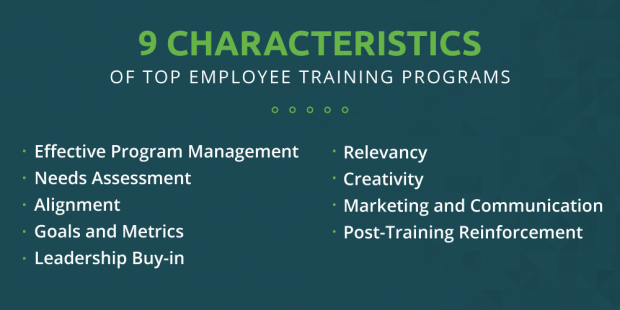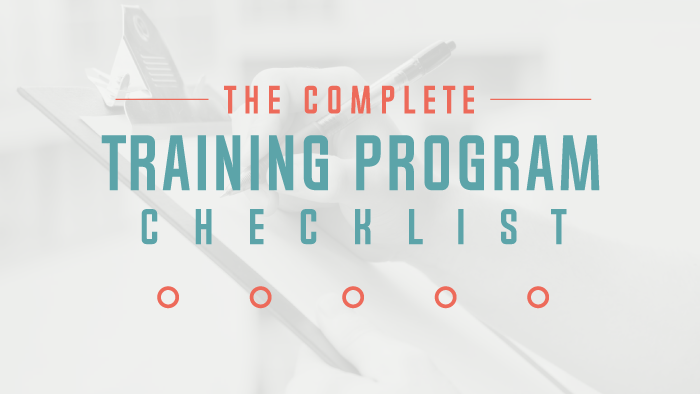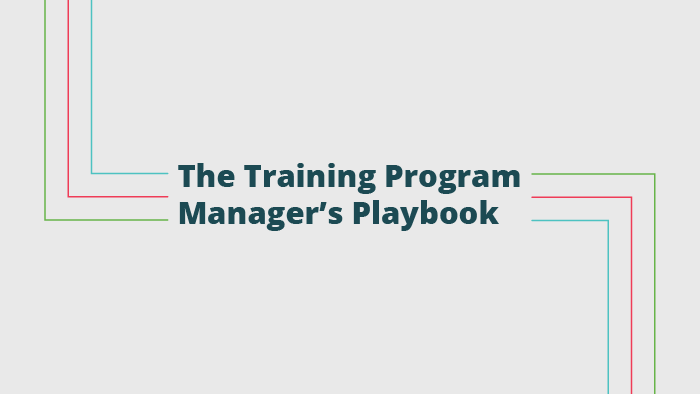Training employees isn’t one-size-fits-all. There isn’t one simple answer to building perfect employee training programs, but there are a few elements that are consistently present in companies with the best training programs.
At BizLibrary, we work closely with training and development managers in many different organizations and situations, and through those partnerships we’ve found nine characteristics that predicate a successful training program. (Click here to see why organizations love partnering with us for employee learning and development.)
No matter the type of program you’re developing – manager training programs, onboarding programs, or upskilling your employees, try to include all nine of these components:
- A skilled and effective training program manager
- Assessments of learning needs throughout the company
- Training alignment with company objectives
- Goals and metrics that show training effectiveness
- Leaders advocating for training
- Modern and relevant learning content
- Creative ideas for training initiatives
- Ongoing marketing to encourage participation in training
- Reinforcement of what employees learn
Read on to learn how you can implement these training best practices into your own employee development programs.
1. Effective Training Program Management
A high quality training program starts with a person – a champion. We’ll call this person the program manager. In some organizations this person might be the training and development manager, learning and development specialist, training coordinator, chief learning officer… there are a lot of options here. Regardless of job title, this person is the one who manages training and development.
Program managers are responsible for planning and executing all training initiatives within an organization. An ideal training program manager is inherently curious, open-minded, motivated, and invested in developing employees’ skills to help them reach their potential. They are committed to learning and are constantly working to improve their own skills and competencies.
Additionally, this person is usually tasked with marketing the training program internally, so that employees are aware of development opportunities. Other important skills include problem solving, business acumen, and leadership skills.
To make your job a little easier, here’s a checklist covering all the elements of an effective training program for employees:
2. Assessments of Learning Needs
In getting started, the program manager must be able to identify the needs of an organization. This is where curiosity comes into play – they must take time to understand the past, present, and future direction. A needs assessment can be conducted through research, interviews, and internal surveys.
At the core of any effective training program is correctly identifying who needs to be trained, and on what skills or topics.
A “training need” is the gap between current performance and required performance. For example, if you find that you have unsatisfied customers, there might be a need for customer service training for your sales and support teams. If you’re looking to solve an employee retention or engagement issue, you might want to expand your leadership bench with management training programs or provide corporate training programs for your high performers.
Check out our Complete Guide to On-Demand Employee Training for more tips on assessing learner needs and all things on-demand training!
3. Aligning Training to Business Goals
Once needs are identified, they must be aligned with organizational initiatives. The program manager should build a curriculum to address problems in the organization and support business goals. By following this model, employees will be more likely to understand the training and it will be supported by managers and leaders.
The impact to the organization is the critical piece. No one wants to do something just to do it – you must have a purpose.
When linking training to organizational strategy, you will be able to easily identify the above or bottom line indicators – are you saving the company money or making the company money?
4. Setting Goals and Tracking the Right Training Metrics
The outcomes of training employees can be difficult to quantify. However, when the program manager is able to determine organizational needs that are aligned with the business, quantifying training becomes much easier.
When developing goals, make sure metrics give the whole picture, including quantity, quality, time, cost and effectiveness. You’ll want to develop a benchmarking strategy for evaluating your progress towards your goals and ensure that data and reports are easily available to provide you with the information that you need.
Schedule time to monitor, analyze and review progress towards goals on a regular basis. This will allow you to become agile and shift strategy as needed. Training program management isn’t always easy, but BizLibrary is here to support you!
Understanding how to evaluate your training and development programs is a big piece of proving their value and seeing how to increase training effectiveness.
Not sure which metrics to look at? This infographic breaks down the best KPIs for each stage of your training program.
5. Leaders Bought into and Encouraging Employee Learning
One of the keys to a successful training and development program, and possibly the most important, is leadership buy-in from the top down. Having leadership support helps drive the importance of a program, assist with accountability, and establish appropriate expectations.
Leadership buy-in is more easily obtained when the program manager has been able to identify the needs of the organization, align them to the business, and develop formalized goals and metrics that will provide results.
Senior leaders will want to know how the training program can impact the bottom line, so be prepared to talk about this when you present your ideas.
6. Modern and Relevant Training Content
Providing relevant training content is key to a good training program, to ensure your learners are engaged and continue to come back for more.
The modern learner today is distracted, overwhelmed and has little time to spare. Catering content to their needs is not only important – it’s critical.
The training content you present to your employees must be applicable and timely to help them with their daily duties, expand their mind, and provide them with quick takeaways that can immediately be applied. This is especially true in manager trainee programs, as they managers play a critical role in an organization’s success.

7. Creative Ideas that Draw Employees into Learning
We’ve found over the years that programs that have some type of creative hook are viewed as more valuable to the organization.
Creativity can start with a program launch that has a theme – it can be as simple as a corporate university or college layout.
Branding the training initiative with a logo or mascot can add a level of fun and familiarity as the program continues. Other creative ploys could include seasonal themes and contests.
8. Consistently Marketing the Training Program
Having a marketing strategy is an integral part of your implementation and an essential component of a successful learning and development program. A successful marketing plan includes not only initial launch activities, but also strong ongoing efforts throughout the program.
As you build your plan, remember to keep your program goals and success factors at the forefront of your decision making, and tie the activities into these goals.
Any communication sent out to employees should include not only an overview and clearly defined expectations, but also show an employee what’s in it for them. You must provide a “why” behind every part of training. Your goal is to use marketing tactics to increase utilization of your training program. Providing a training plan template for employees could also give your employees some structure so that they don’t feel adrift in the sea of learning.
If the idea of marketing training feels daunting to you, check out this blog for tips to make it painless!
9. Training Reinforcement to Increase Learning Retention
Many organizations spend thousands of dollars per year training employees, only to discover that they’re not applying new concepts. Training reinforcement is a crucial part of ensuring training is applied on the job.
Without being given the opportunity to remember, employees will forget nearly all training in less than a week.
Training reinforcement is a series of small lessons or learning activities that support a core concept or skill. By continuing to teach what was learned at a seminar or from a video, employees will not only remember more, but they will also be more likely to apply it to their everyday work.
See These Employee Training and Development Best Practices in Action!
To easily find companies with the best employee training programs and see how you can borrow strategies to replicate their success in your own organization, just look at industry awards!
A few to check out would be Brandon Hall’s HCM Excellence awards, the Training Top 125 from Training Magazine, Elearning’s Learning! 100, CLO’s Learning Elite, and HR.com’s LEAD awards.
For quick reference, here are some success stories from award-winning organizations that partner with BizLibrary.
We hope you found this article helpful and wish you the best of luck in building your training and development program!



